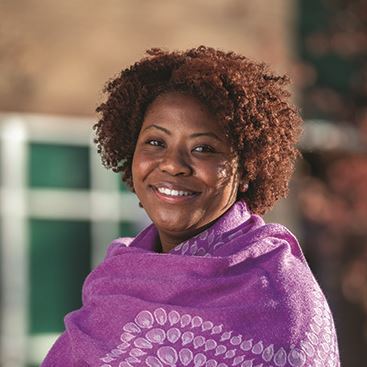Success Starts with Belonging
By Nicola Corbin, Associate Communication Professor, 2019 WSU Crystal Crest Master Teacher Award recipient
 Let’s take a jaunt through your memories, back to your time at Weber State. From the friendships you made to the hours you spent in the classroom, you persisted to become a proud Weber State alum. But, you might also know others who began college the same time as you, but never graduated.
Let’s take a jaunt through your memories, back to your time at Weber State. From the friendships you made to the hours you spent in the classroom, you persisted to become a proud Weber State alum. But, you might also know others who began college the same time as you, but never graduated.
From financial concerns to unfamiliarity with navigating a complex system to poor classroom performance, there are many reasons students do not make it to graduation. In fact, student retention rates fall from 65% in the first year to about 45% by the third year of a cohort at Weber State. It is a problem that needs a holistic solution.
One part of this solution is to foster a sense of belonging in the classroom. An inclusive pedagogical approach seeks to create exactly such a sense of belonging. While the term “inclusive pedagogy” seems like some new-fangled innovation, the ideas behind this concept certainly aren’t new. Most of us teach with the goal of success for all of our students, especially at Weber State. However, when applied practically, the approaches we use in our teaching and curricula are sometimes counterproductive to learning for some students. Inclusive pedagogy strives to correct this issue as much as possible. It is a deliberate mindset and approach that challenges us to create courses and course environments in which more of our students will reliably succeed.
We can start by asking ourselves:
- Who are we and what social positions do we occupy?
- Who are our students and what social positions do they occupy?
- What are the different ways in which our students learn?
- What accommodations are we making to eliminate barriers to learning?
- What books and course materials do we choose to assign?
- What scholars do we choose to study?
- What experts do we choose to reference?
- What visuals do we choose to use in our presentations?
- What ways do we choose to conduct assessment of learning?
- How do we choose to interact with our students?
With these answers in mind, we must go a step further and ask ourselves: Will all of our students, regardless of who they are, feel that they belong in our classrooms and are being primed for success? Inclusive pedagogy invites us to make the necessary adjustments to make our answers “Yes.”
Education is hardly a passive endeavor, and students have their own responsibilities to ensure the best outcomes for themselves. However, students tend to do best when the environment has been built for success. Drawing from a vast body of research and fields, the techniques and skills championed in inclusive pedagogical approaches help us to create such environments.
The benefits of inclusive pedagogy reach beyond the success of any individual student. When we approach our teaching with an inclusive mindset and create environments that foster belonging, we also model ways of interaction with people who are different from us. When it reaches its ideal in implementation, inclusive pedagogy models empathy and an appreciation for nuance, in addition to the student success outcomes we strive to achieve.
And, in today’s world, we need more of that.
